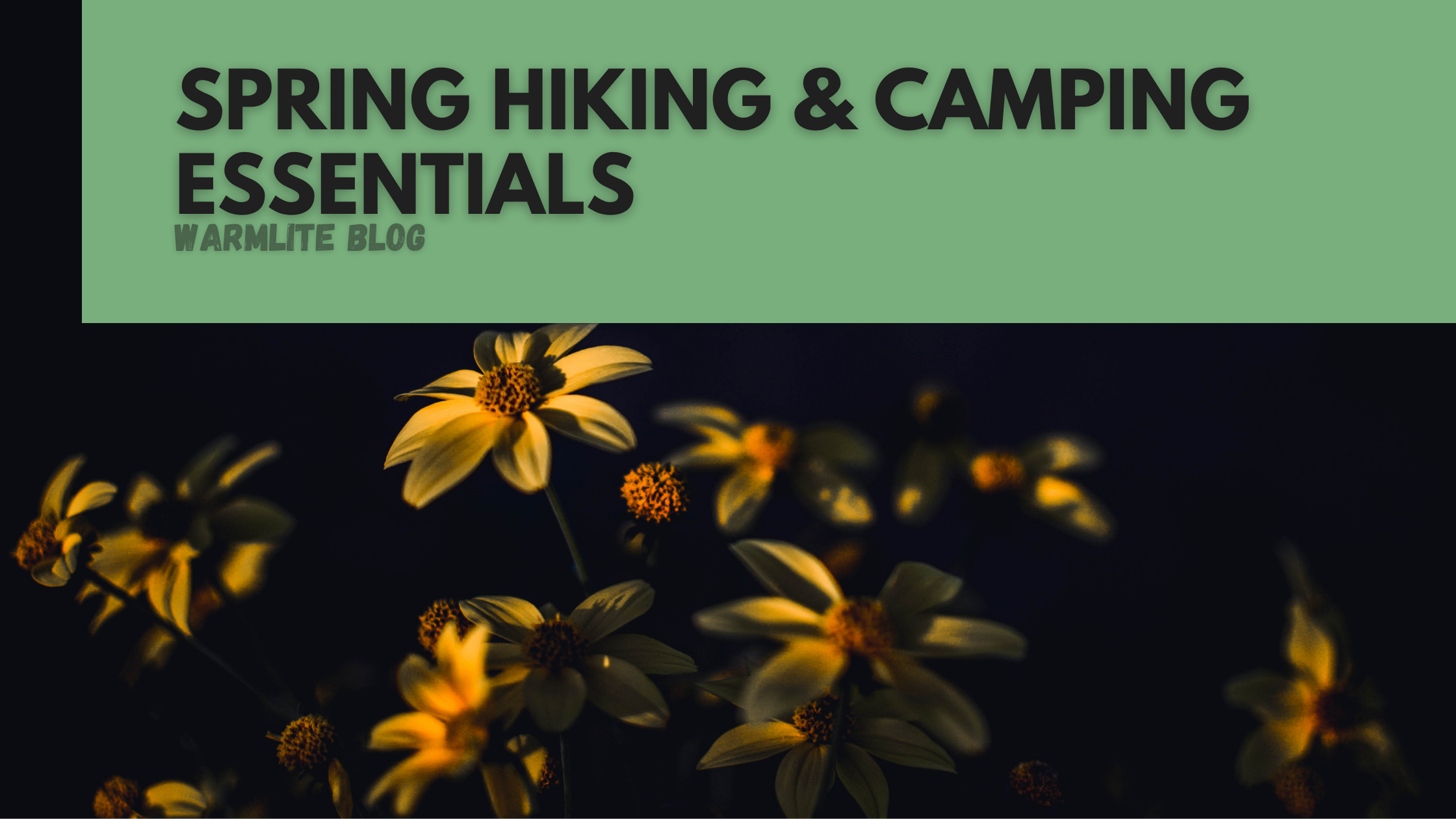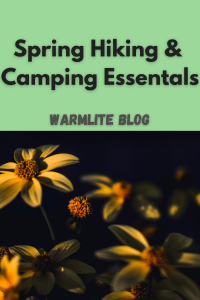Spring Hiking & Camping Essentials
By Jessica Marie
Introduction
We are a few weeks into spring here in the Northern Hemisphere and everyone is dusting off their hiking and camping gear, ready to hit the trails and discover new sights. But before we head out, we need to do some housekeeping to make sure we are actually ready to go for a spring hiking or camping trip. Now, let’s get to those camping and hiking essentials.
Check You Gear
Before you go, make sure your gear is in good condition. Check your bags, sacks, tents, footprints, socks, boots, ponchos, etc. for holes or areas that are worn. Make sure everything is in good condition and will keep you safe during your trip. Out on the trail is not the place to find a hole in your tent or your poncho. That discovery will ruin any trip. So, give everything a good once over. If something is damaged see if you can repair it or if you need a replacement. If you have Warmlite gear, we can repair gear of any age. Contact us via phone or email and we will give you a repair quote.
Prepping for the Weather
Spring is one of those seasons where it loves to trick you on what the weather will be that day. With that in mind, we must be prepared for various extremes when we go out. Make sure you dress in easily removable layers. This way, if it is too warm you can easily remove layers, but if it swings back to cold again, you can quickly put those layers back on. This means we have to carry more gear, but it is better to be prepared than sweating too much and becoming dehydrated or freezing from not enough layers. While we can’t control the weather, we can make sure we have the spring hiking and camping essentials.
Shoes
Being prepared for the weather goes beyond your clothing. You need your gear to back you up. Don’t wear sneakers, wear waterproof boots in case of snowpack, rain, snow, and mud. Sneakers just aren’t going to cut it for this time of year.
Rain Gear
Make sure to bring rain gear. You never know when it is going to rain, snow, or be windy. Rain gear can make a great wind-breaker as well.
Tents
Depending on the elevation or conditions you will be in, it may be warm and comfortable during the day, but evening and nighttime are an entirely different temperature. While a three season tent may be good enough in a warm climate or area where it won’t be windy, they won’t work elsewhere. If you are North or in high elevations the overnight lows can dip near or below freezing, in high elevations, wind can be ever present. Make sure your tent is rated for the cold and wind. Pick something that is easy to set up.
Practice with your tent before you leave. Not only will this help you find any issues, such as mold, holes, or needed repairs. This will also remind you of that one tricky spot in the process. It is better to practice when you are comfortable at home, and not when you are trying to set your tent up after a long day of hiking and the sun is going down.
Sleeping Bags
Look into the overnight lows of the area you are going before you leave. Is your sleeping bag rated for those temperatures? Will you need a vapor barrier liner for your bag or vapor barrier clothes to keep you warmer? If your bag is only rated for 0 and it will be negative 10 or 20, that isn’t going to work. Invest in a good bag, nothing ruins a trip more than lack of sleep from being cold all night.
Contact Someone in the Know
Check into the trail rules on fires. Just because they allow camping or fires in the summer or winter, doesn’t mean they are always open for those in every season. Contact the local trail guides, park rangers, fish and game department, or other local authorities on the area. They can help you understand seasonal regulations. They will be a wealth of information, not just about camping and fire regulations. These local experts can also help you build a custom gear guide for your trip. They know the area and they know what you need to have a fun hiking or camping trip.
Wrap Up
Make sure you pull out all your gear that you are planning to use on your hiking or camping trip. Check for holes, wear, quirks, and damage. Repair and replace as needed. Make sure you use and bring plenty of winter gear such as waterproof boots, rain gear, and removeable layers. Make sure your tent and sleeping bags are rated for the overnight lows you will experience in the area. Contact local authorities to get their advice on regulations, conditions, and gear that you may need to succeed on this trip. Those are the spring hiking and camping essentials. Have fun this spring!



Recent Comments